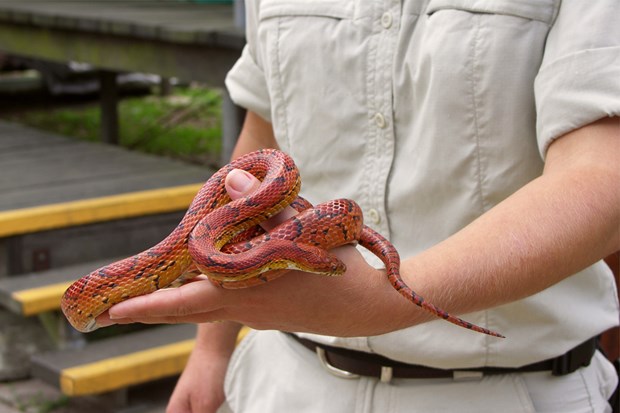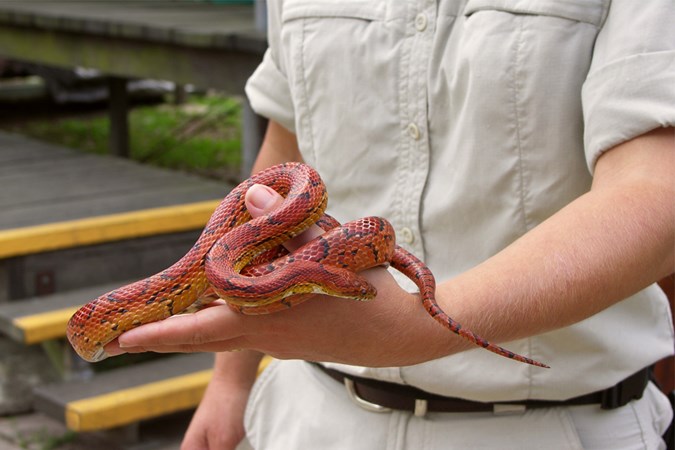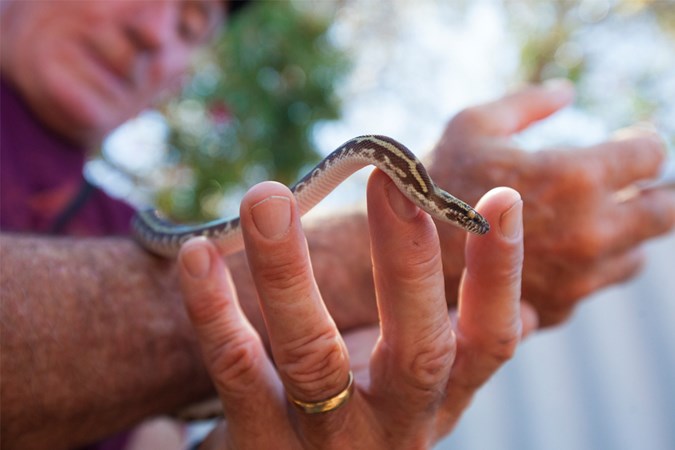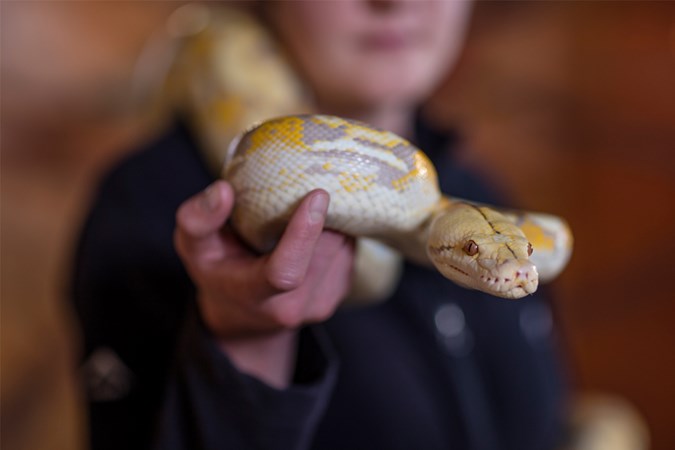6 super fun snake facts for kids

Slippery little suckers!
By Johnathan David
Everything Reptiles / April 04 2023
Snakes are among the coolest, most unique and well-known reptile in the world.
The snake is known for their slimy, long, and legless body which slowly slides along the ground. You may think they are scary, or just plain cool!
Snakes are very quickly increasingly in popularity, along with other reptiles such as the frog, it is these scale-covered, cold-blooded creatures who are now making their way into our homes as pets.
Therefore, we are here to bring you our 6 fun-facts kids should know about snakes, so you can understand just how cool these unique reptiles really are!

The majority of snakes found in Australia are venomous snakes (Image: Getty)
1. There are so many different species of snakes!
In fact, there are over 3000 species – 3789 to be exact!
Snakes can be found all over the world and are further divided into separate sub-species due to differences in their environment, and appearance (such as colour and size).
All snakes have limbless, elongated and linear bodies. In fact, they are often described as “legless lizards”.
Common species of snakes found in Australia include the Yellow-faced Whip Snake, Western Brown Snake, the Curl Snake – and many, many more.
Furthermore, the majority of snakes found in Australia are venomous snakes. With a whopping 100 out 170 species being classified as venomous.

Snakes are a cool, unique and sometimes misunderstood reptile (Image: Getty)
2. Snakes shed their skin
Snakes shed their skin and unlike us humans, it’s not due to sunburn, or exfoliation. Instead, the snake sheds their skin as a whole.
This means that the snake sheds their skin as a kind-of singular armour.
This molting/shedding process is scientifically known as ecdysis. Ecdysis may occur anywhere from four to twelve times per year – this is dependent upon the species of snakes.
The reason for ecdysis is due to the fact that the snake’s skin does not grow with their body. The snake “outgrows” their old skin and therefore sheds it.
Additionally, ecdysis may occur due to the exposure to harmful or irritating parasites.
Instead of cleaning themselves or using medication, the snake simply sheds their skin and the parasites along with it! A survival mechanism which is very essential and clever.
Did you know that we often use a snakes skin shedding to aid in figuring out which species is near? For example, the Eastern Brown Snake has 17 mid body scale rows.
3. Snakes can smell with their tongue!
Snakes can smell with their tongue. But don’t get confused – they still have nostrils like us which they use to smell also!
However, snakes are practically deaf and absolutely do not have 20/20 vision. Therefore, they need to compensate for their weaknesses with other physiological strengths.
This strength is their tongue which is a wacky smelling tool indeed.
The snake “flicks” their tongue; a movement which you may have seen depicted regularly. This flicking action works by allowing them to pick up moisture particles/odors in the air. The particles are then gathered up and presented to an organ known as the “Jacobson” which is used for sensory purposes and therefore hunting.
This characteristic is super effective for hunting snakes such as the Eastern Brown Snake who loves to follow the scent of their own tongue and rushes towards their prey at quite a pace.

Snakes don't have eyelids! (Image: Getty)
4 They are carnivores
The snake is a carnivore; this means they require a meat-based diet so that they are able to thrive and survive.
Their meat-based diets include smaller prey such as mice and rats; or even each other! However, not every species of snakes is cannibalistic-like behaviour.
Different species of snakes have different methods of consuming or hunting for their prey. For example, some snakes use their venom as a weapon while others may use constriction methods.
Constriction and suffocation methods are used by larger snakes such as the python.
Your every-day, household friendly snake may just consume smaller prey whole – a scary thought for some.
Although all snakes are carnivores; they may still have different dietary habits. For example, the Centralian Carpet Python eats mammals and birds where the Curl Snake’s diet is mainly composed of reptiles.
5. Antarctica is the only continent with no snakes
Snakes can be found everywhere on the planet except for the dry and cold continent of Antarctica.
However, we do admit that the Snakes are not native everywhere and there are no native populations of snakes in Newfoundland, Ireland, Iceland and New Zealand. BUT, you can find them in a zoo!
Antarctica is a unique continent with no zoos and therefore no immigrating snakes!
The snake can live in a range of environments – this depends heavily upon the species or sub-species of snake. For example, you may find our slippery and slimy friends in forests, deserts, swamps, seas, and grasslands.
The snake is a cold-blooded animal and therefore their habitat MUST require a heating source – so you can understand why Antarctica does not really stand out as an ideal home for our snake friends.
Australia on the other hand has approximately 170 species of snakes and has the 5th most snake species out of all the countries in the world.

Johnathan David from Everything Reptiles is sharing his favourite snake facts for kids (Image: Supplied)
6. They don’t have eyelids!
The snake has a lot of differences when it comes to their physical appearance. However, one that often goes a little unnoticed is their lack of eyelids.
No species of snakes has eyelids. But don’t worry, their eyes don’t go unprotected.
Instead, the snake has a “brille”. It is their brille which gives the snake a glassy-eyed look. The brille can be described as a spectacle-like feature which is made from transparent skin.
Just like their skin, the snake even sheds their brille at the same time their skin sheds throughout the year.
The brille may be different to an eyelid (and we certainly do not shed our eyelids!). However, they still have a role in the protection from dirt, dust and other harmful particles which may irritate the snake’s eyes.
Did you know that a three-eyed snake was found in Australia? And not one of it’s eyes had an eyelid!
There you have it; 6 fun facts your kids should know about snakes!
Snakes are a cool, unique and sometimes misunderstood reptile – they can be scary, interesting or they can even be welcomed home as pets. With this cold-blooded animal quickly increasing in popularity – it would be silly not to share our fun facts with you all.













